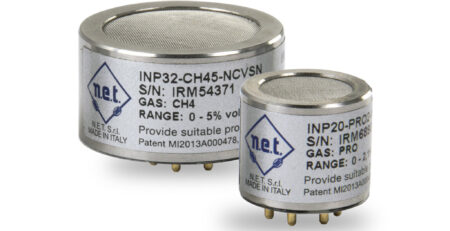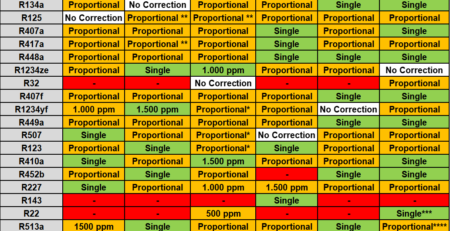SENSOR INSTALLATION GUIDELINES
NET manufactures and sells a complete range of gas sensing devices on an OEM basis for industrial and commercial applications used by instrument manufacturers worldwide. NET does not manufacture complete instruments or detectors and let alone complete gas detection systems.
Nonetheless, oftentimes users ask us for sensor installation guidelines in terms of number and location of sensors. This is a rather complex issue, and we recommend consulting with safety specialists when determining the quantity and placement of sensors to adequately monitor the specific area in question. Standards such as EN50073 (Guide for Selection, Installation, Use And Maintenance Of Apparatus for The Detection And Measurement Of Combustible Gases Or Oxygen) offer some guidance but tend to remain generic in terms of recommendations and therefore may not be easily applied to specific application cases.
We summarize here some basic guidelines applicable to our sensors – without pretending to cover the subject adequately but at least to highlight and prevent the most common location mistakes.
Our sensors, and any sensor except open path sensors for that matter, monitor the gas concentration only at its immediate location. It is therefore critical to select all potential leak sites. There are two main categories of hazardous locations:
- Potential gas discharge points. These are places where hazardous gases may be released, such as valve stem seals, gaskets, compression fittings, expansion joints and the chiller itself. Also, monitor any refrigerant storage location.
- Potential contact areas. These are places where hazardous gases may endanger workers or damage equipment or property (populated areas, confined spaces, pits, stairwells, crawl spaces, shelters, and residential, business and industrial environments located nearby).
Important aspects to take into consideration:
- Place sensors in areas where the air currents are likely to produce the highest gas concentration, including areas where gas buildup is likely, such as corners or stopping points of moving devices that release gas.
- At the same time, place sensors at some distance from pressure parts in order to avoid high speed jet leaks to go undetected and to allow gas clouds to properly form.
- Do not place sensors near entrances or fresh air vents (because sample concentration will be diluted by incoming air).
- Place combustible gas sensors between the potential leak and the ignition source.
- Avoid mounting sensors near radio transmitters or other RFi-producing sources.
- Install in a position that prevents water or dust accumulation on the sensor. Preferred position is facing downward; horizontal placement is also acceptable.
- Consider gas density:
- If gas density is greater than air, install sensors closer to the ground (this is the case for most refrigerants, Sulfur Dioxide and Propane).
- If gas density is less than air, install sensors near the ceiling (as for Methane and Ammonia).
- If gas density similar to air, install sensor at or near breathing level.








